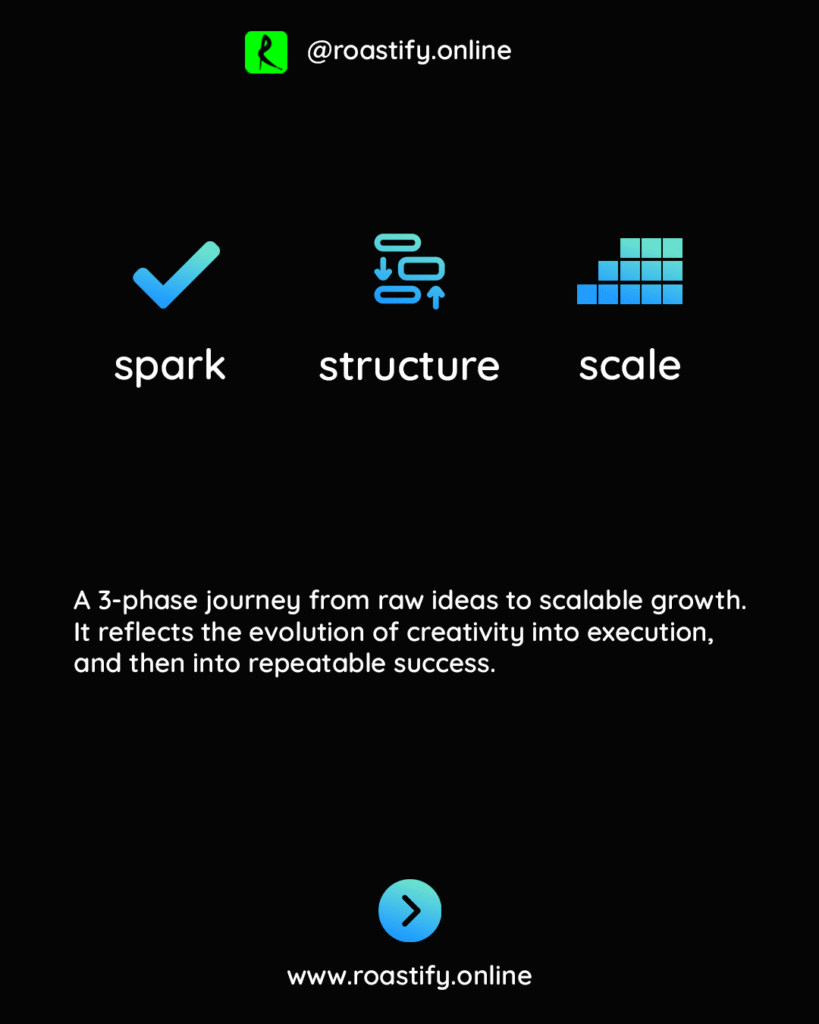We’ve all had the spark — a flash of inspiration, the moment where something clicks. It could be the seed of a business, the framework for a campaign, or simply an unconventional solution to a familiar problem. But if you’ve been in the creative or strategic world long enough, you know this truth: ideas are cheap — execution is where the weight lives.
The challenge isn’t having ideas. It’s building something around them that moves.
This is where the framework of Spark → Structure → Scale becomes more than just a catchy phrase. It’s a mindset shift — one that separates thinkers from builders, and builders from leaders.
1. The Spark: Where Chaos Lives
The spark is the easiest part. It’s exciting. Emotional. Unfiltered.
It usually shows up in a brainstorm, on a walk, or at 2 AM when your brain won’t turn off. Sparks are driven by instinct and intuition, and they’re essential — but without form, they flicker and die. They fill journals, digital notes, post-its… and often stay there.
This is where most people get stuck — too many sparks, not enough follow-through.
2. Structure: Where the Work Begins
Structure is the bridge between the abstract and the actionable. It’s where an idea stops being a feeling and starts becoming a framework.
Structure doesn’t mean over-planning or drowning in documentation. It means taking a concept and asking questions like:
- What does this idea look like as a system?
- What are the steps, phases, or components?
- What resources or skills does it require?
- How does it connect to outcomes?
This is the part that many creatives resist. It’s less romantic, more analytical. But it’s also where clarity shows up. It’s where the spark becomes visible — and more importantly, transferable to others.
3. Scale: The Shift from Motion to Momentum
Structure gets you moving. Scale keeps you moving.
Scaling isn’t just about doing more. It’s about doing better, with less friction. It’s about turning your process into something repeatable, delegatable, and automatable.
At this stage, the goal is to build systems that grow with you. Whether that’s a content engine, a sales funnel, a product workflow, or a team training method — scale happens when you stop re-inventing and start refining.
The biggest mistake people make during this phase? Trying to scale what hasn’t been structured. Scaling chaos just leads to burnout. But when scale builds on structure, the result is momentum — and momentum is magic.
Why This Framework Works
Because it’s honest.
It respects the creative spark, but it doesn’t glorify it.
It embraces structure, but it doesn’t get lost in perfection.
It chases scale, but only after clarity and intent.
This isn’t a linear path. Sometimes you revisit the spark. Sometimes you restructure mid-launch. But understanding these phases — and knowing where you are in them — brings control to what often feels overwhelming.
So next time a great idea hits, don’t just celebrate the spark.
Ask yourself what it needs to become something more.
Spark → Structure → Scale.
It’s not a slogan. It’s a strategy.


